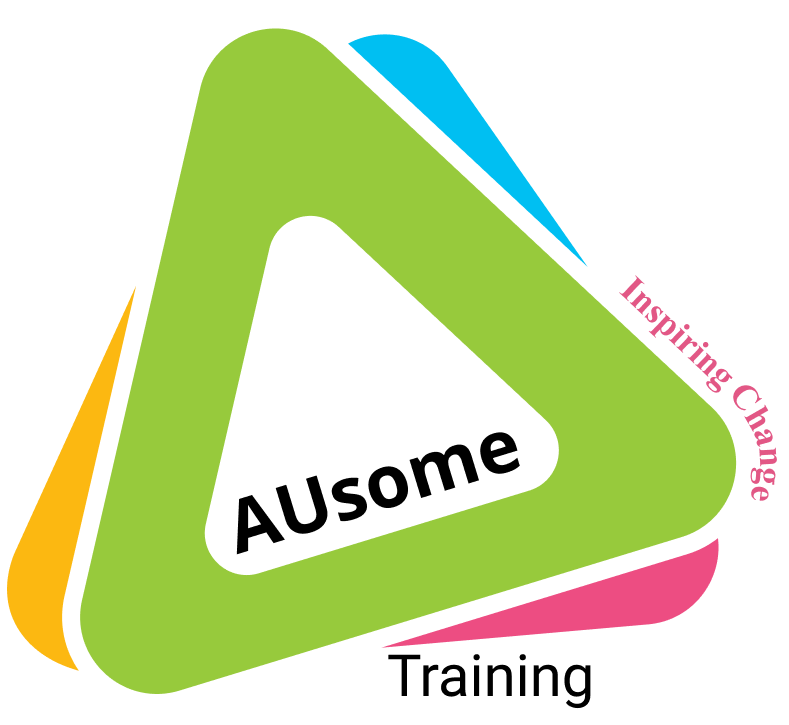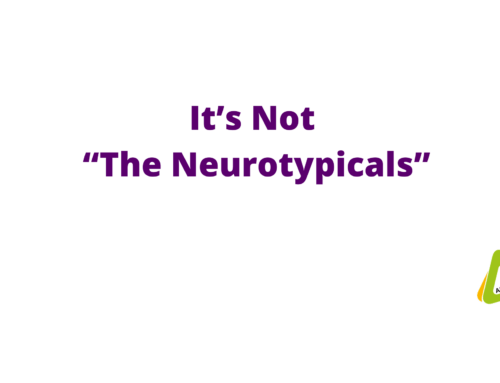Masking, also known as fortressing, is a coping mechanism that many people, especially Autistic people, employ to navigate social interactions and life in general. It involves creating a facade or adopting social personas to blend in and protect ourselves from potential harm or rejection. For Autistic people, masking goes beyond surface-level adaptations. It often involves enduring pain and discomfort, having really poor boundaries and exhibiting trauma responses as a means of self-preservation. This article aims to explore the profound impact of masking, the experience of fortressing, and the longing for authenticity among Autistic people.
Understanding Masking:
Masking is a complex phenomenon that emerges from the desire to belong. It is often described as something Autistic people do to “fit in”. Logically then the next question ought to be “why aren’t we allowed in?” but unfortunately the “experts” didn’t focus on our social environment and how we fortress ourselves to avoid the pain caused by judgment and rejection. Autistics may imitate the behaviour and interests of others to align with social groups or workplaces, even if it doesn’t align with our authentic preferences. We may agree to do things that we are uncomfortable doing, go places that we don’t want to go and say yes when we really mean no. Our social personas we create can entertain others, be the life and soul of the party or be the class clown – all as a way to protect our inner selves from rejection and ridicule.
This can mean taking advise even though our instincts tell us not to. It can mean that we overextend ourselves and take on other people’s work or do too much as a way to prove ourselves and to be accepted. We can be perfectionists (another trauma response) and we can turn that perfectionism on our social personas- they also have to be perfect. If they are not perfect, it can evoke a sense of deep shame, leading us to constantly engage in alternate narratives in our minds, tirelessly crafting new, improved versions of ourselves that align with what we believe others want us to be. Imagine how much energy that uses up. Imagine how exhausting it is to be constantly on high alert, even long after a social interaction has taken place.
We camouflage our true selves, veiling not only our Autistic traits but the very essence of who we are, in order to assimilate into a world that lacks the appreciation or recognition of Autistic expression. However, this process often leads to a further disconnection from our authentic identity, the very part of us we try to protect. This results in a deep-seated sense of isolation, a feeling of being disconnected not only from others but also from our own inner selves, the very inner self that we are trying to protect. It gets lost, trapped inside us and often we forget who this part of us is. This light inside us dims and many of us spend our adulthoods unveiling, unravelling or de-fortressing and trying to find our way back to our authentic selves- a self that has been buried under cardboard versions of what others might want us to be.
Examples of Masking:
Suppression of Stimming Behaviours:
Autistic people may suppress stimming behaviours, such as hand-flapping or rocking, that bring us comfort and serve several important somatic sensory functions. Everyone stims, every single human being uses repetitive movements but it is stigmatised in Autistics so we may suppress to avoid drawing attention and to conform to societal expectations of “normal” behaviour. By suppressing these movements, we can create a false sense of conformity while denying ourselves the opportunity for self-expression, learning, processing, stimulation and soothing and emotional regulation.
Enduring Sensory Overload, Pain or Discomfort Silently:
In environments that are overwhelming or sensory-intense, Autistic people may endure the discomfort silently. We might mask our sensory sensitivities to prevent others from perceiving them as different or to avoid drawing attention to ourselves. Many of us have learnt that our stims are unacceptable, many of us adults have lost our stims as we’ve had them “tutted out of us” by adult caregivers throughout our childhood. Some of us had “therapy” to stop us doing very normal, natural and helpful human actions. Others may have picked up that what we do is different and so we’ve learnt to hide them. All of this hiding and suppressing can lead to physical and emotional exhaustion, as we constantly navigate an environment that disregards our sensory and social needs. Stimming is human and necessary and suppressing it can create several detrimental outcomes with regards to learning, processing, regulation and emotional well-being.
People-Pleasing Behaviours:
People-pleasing is a common masking behaviour among Autistics, rooted in our trauma responses. In an effort to maintain social harmony and minimise the risk of rejection, we often prioritise the needs and desires of others above our own, sometimes at the expense of our own well-being. This excessive accommodation and self-sacrifice serve as coping strategies to navigate social interactions, but they come at a cost. By constantly prioritising external validation and disregarding our own authentic selves, we perpetuate the disconnection within ourselves and experience potential consequences such as burnout and diminished self-worth.
Avoiding Conflict:
A core aspect of people-pleasing behaviours is the avoidance of conflict. This avoidance is intertwined with our masking strategies, as we strive to navigate social situations with minimal confrontation or disagreement. Deeply ingrained in our desire to maintain social harmony and avoid rejection, we often suppress our own opinions, needs, and boundaries to keep the peace and meet the expectations of others. However, this constant avoidance of conflict only serves to further detach us from our authentic selves. By prioritising external validation over our own inner voice and desires, we deepen the disconnection within ourselves, hindering our ability to express our true identities and needs.
Hyper-Adaptation:
Hyper-adaptation is a common behaviour among Autistic individuals that falls under masking. It means trying really hard to fit into the social norms and expectations of the neuro-conformative world. Autistics may go to great lengths to change our actions, interests, and even how we look in order to be accepted and to feel like we belong. This constant effort to blend in can be overwhelming and harmful to our well-being because we end up hiding who we truly are and ignoring our own preferences and needs. We might never actually express our thoughts, dreams and wishes and only say what we believe others want to hear. We also might run simulations in our minds after a conversation has taken place to see if we are happy with the outcomes. If we’re not then the deep shame takes over again and we work out what we can do better at next time. Human minds are programmed to protect us and anxious Autistic minds can spend hours if not days or longer running simulations and coming up with ways to achieve better results next time. We are often thinking “if I just do this the next time then I’ll get it right, then I’ll belong” and we spent our lives analysing and readjusting and hyper-adapting to each new situation. Can you imagine how utterly exhausting this is? And can you imagine what we could be doing with our time instead of constantly berating ourselves for not being the perfect fake versions of what we believe others want us to be?
The Emotional Toll of Masking:
Which brings us onto the emotional toll of masking. Masking takes a significant emotional toll on Autistic people. While it may provide temporary protection, the underlying truth is that the authentic self remains hidden. The constant need to suppress one’s true identity and project a persona leads to a sense of disconnection and isolation. Autistics yearn for acceptance and understanding, longing for connections where we can be embraced for our true essence. The emotional impact of masking can result in anxiety, depression, low self-esteem, and a profound sense of loneliness. All of this can lead to burnout.
Pushing Through
Pushing through is another significant aspect of masking or fortressing. For many Autistics, the experience of feeling exhausted and constantly teetering on the edge of burnout becomes a familiar state. The relentless pressure to conform and navigate a world that often fails to accommodate our needs or understand our way of communicating leads to a continuous cycle of pushing through challenges without taking much-needed breaks or time for self-care. This relentless pushing through is a result of years of conditioning, where many of us have learned to endure discomfort, pain, social rejection and overwhelming sensory experiences without seeking respite. It is also the result of being conditioned to prove our worth, to show that we are almost invincible and that we can do almost anything- an extreme form of people pleasing.
The fear of being judged, misunderstood, or labeled as “lazy” further reinforces the need to keep going, often at the expense of our own well-being. This persistent pattern of pushing through contributes to a deep sense of physical and emotional exhaustion, leaving little room for self-care and renewal.
Self care is often an alien concept to many of us and if you’ve read this far then I bet you can see why. Underneath the concept of self care is a desire to meet your own needs but we have grown up never having our needs met by others and putting the needs of others ahead of our own so it’s pretty obvious why self care is such a strange concept to so many of us. Learning to care for ourselves and put our own needs first is an ongoing struggle even for those of us who have been on our unravelling or unmasking journey.
Understanding Fortressing:
Fortressing, a term coined by AUsome Training. It describes the construction of emotional barriers as a response to societal pressures and experiences of rejection. Autistic people build these metaphorical fortresses to protect vulnerable aspects of our identity from external judgment and harm. Each fortress represents a facet of ourselves that has been deemed unacceptable or has caused pain in the past. Over time, these fortresses multiply, isolating the person from their true self and the outside world.
The Origins of Fortressing:
Fortressing originates from early life experiences and the conditioning Autistic people undergo. From a young age, we may receive implicit or explicit messages that our authentic self is not acceptable. We may face ridicule, bullying, or rejection for expressing ourselves or diverging from social norms which are popular at that time. As a result, we instinctively retreat behind emotional barriers to shield ourselves from further harm.
The Impact of Fortressing:
Fortressing allows Autistic people to exist within a space where we can still be ourselves, albeit distanced from the outside world. It provides a semblance of safety and protection from potential hurt or rejection. However, the price paid is a profound disconnection from one’s authentic self. The fortresses become internal prisons, isolating the person and denying us the freedom to fully embrace and express our identities.
Recognizing Masking and Fortressing as Trauma Responses:
It is crucial to acknowledge that masking and fortressing are not just behavioural adaptations but deeply ingrained trauma responses. Autistic people develop these mechanisms as a means of self-preservation in a world that often fails to understand and accommodate and celebrate us. The trauma originates from the ongoing invalidation, rejection, misunderstanding and prejudice we face, leading to the formation of protective barriers.
Approaching Masking and Fortressing with Empathy and Compassion:
By recognizing masking and fortressing as trauma responses, society can approach Autistic people with empathy and compassion. It requires creating environments that prioritize acceptance, understanding, and accommodation. Autistic people should feel safe to be our authentic selves without fear of judgment or rejection. Educating others about neurodiversity and promoting inclusive practices fosters a culture of empathy, where differences are celebrated and Autistic ways fo being are embraced without prejudice.
Challenging Societal Expectations:
To foster a greater understanding and acceptance of neurodiversity, it becomes essential to challenge the societal expectations that perpetuate the need for masking and fortressing. This involves questioning and dismantling the rigid norms and assumptions surrounding social interaction and embracing the beauty of authenticity in all its forms. By promoting inclusivity, empathy, and validation, society can create spaces where Autistic people can flourish and be valued as the wonderful human beings that we are.
Become part of this important paradigm shift- Embrace neurodiversity and build a neuro-affirming practice, school or workplace with Ausome Training – empowering individuals and organizations to create inclusive spaces for all.




